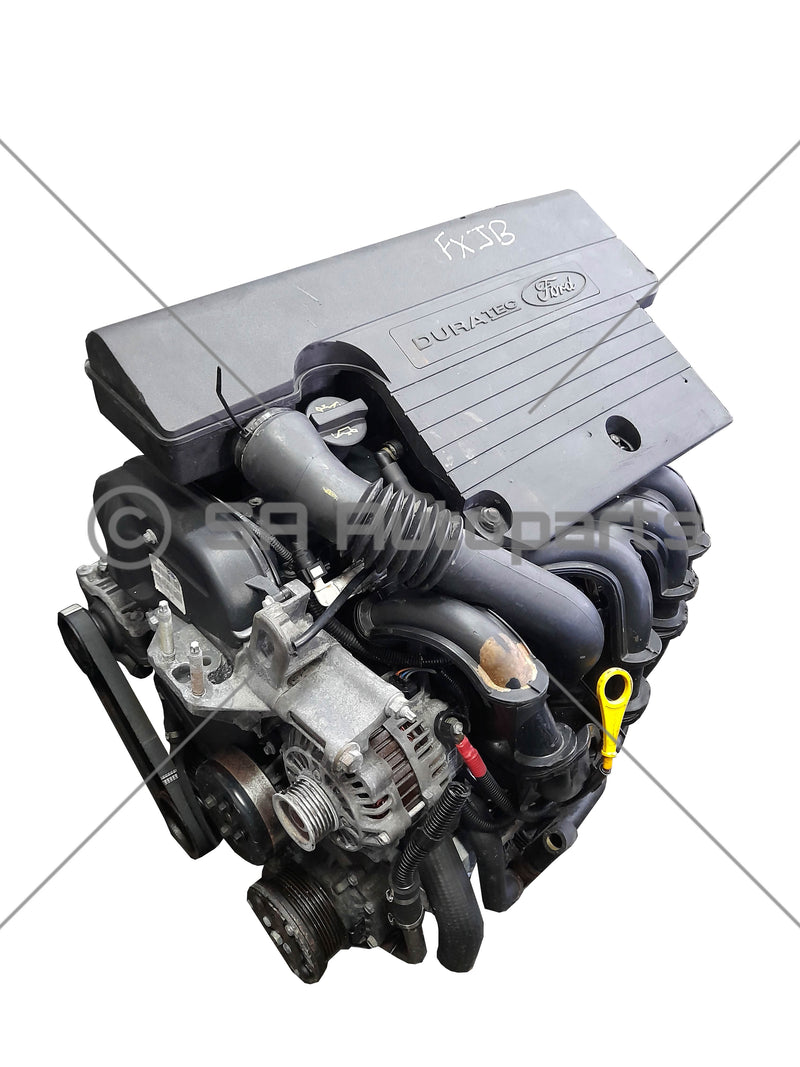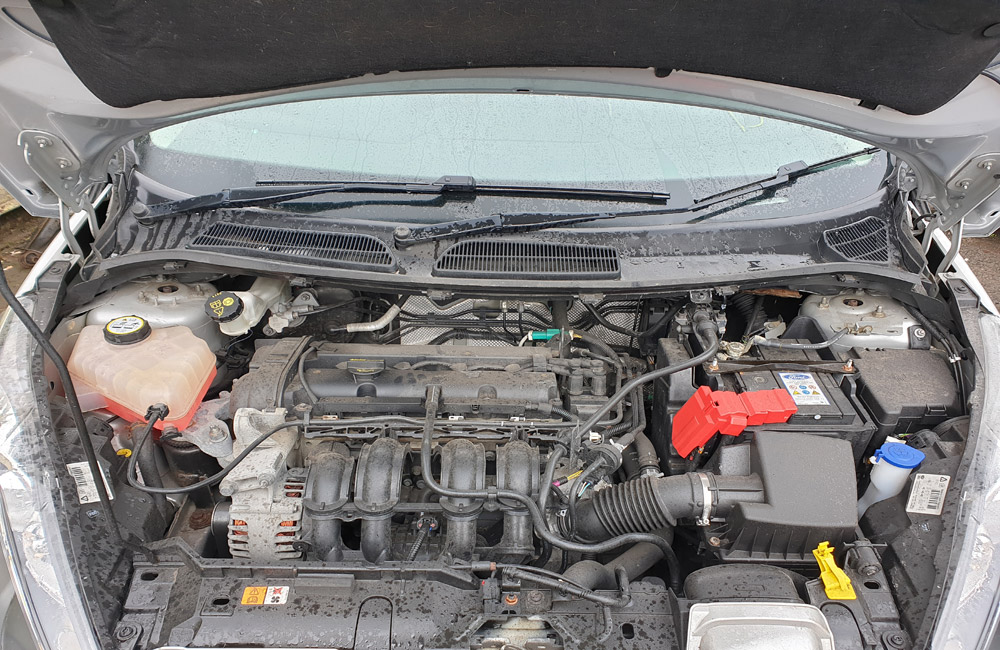Why Choosing the Right Ford Fiesta Engine Parts Matters for Longevity
Why Choosing the Right Ford Fiesta Engine Parts Matters for Longevity
Blog Article
The Future of Engines: Technologies Driving Lasting Power Solutions
As the automobile sector navigates the critical shift towards sustainability, the future of engines is significantly defined by groundbreaking technologies. Electric engine advancements, together with encouraging developments in hydrogen fuel cells and biofuels, are improving the landscape of power remedies.
Electric Engine Advancement
The evolution of electrical engine advancements symbolizes a crucial shift in the aerospace and auto sectors, driven by the immediate demand for lasting choices to fossil gas. This transition is defined by significant innovations in battery modern technology, power electronic devices, and electrical motor style, which jointly improve the efficiency and efficiency of electric engines.
Current innovations have actually brought about the creation of lighter, a lot more energy-dense batteries, such as lithium-silicon and solid-state batteries, which assure longer arrays and shorter charging times. In addition, improvements in electric motor efficiency, such as making use of long-term magnets and advanced cooling down systems, make it possible for electrical engines to operate successfully under varying conditions. These improvements not only boost automobile performance but likewise add to a reduction in overall power usage.
Additionally, the integration of sophisticated software program formulas has actually maximized power management in electric cars, permitting regenerative stopping and anticipating billing techniques. As makers progressively welcome electric propulsion, the auto and aerospace markets are experiencing a paradigm shift towards greener innovations. This development not only fulfills regulatory demands however likewise lines up with customer preferences for eco-friendly transportation remedies, solidifying electrical engines as a cornerstone of future sustainable mobility.
Innovations in Biofuels
As the aerospace and vehicle markets increasingly focus on sustainable power resources, developments in biofuels arise as a corresponding remedy to electric engines. Biofuels, originated from natural products such as crops, waste, and algae, offer an innovative opportunity for decreasing greenhouse gas discharges and reliance on nonrenewable fuel sources.
Recent research has concentrated on improving the efficiency and sustainability of biofuel manufacturing. Second-generation biofuels use non-food feedstocks, minimizing competition with food supply and reducing ecological impact. Moreover, improvements in artificial biology have actually allowed the design of microbes to produce biofuels better, causing greater yields and reduced manufacturing costs.
Additionally, the development of drop-in biofuels permits for seamless combination right into existing infrastructure, enabling a smoother shift for markets commonly based on nonrenewable fuel sources. ford fiesta engine. These fuels can be made use of in current engines without adjustments, facilitating their fostering throughout different industries
Investments in biofuel technology, along with supportive plans, are necessary to drive development and scalability. As the global area seeks to fight environment modification, biofuels use a pragmatic, instant option that aligns with the overarching goal of sustainability in transport and aeronautics.
Hydrogen Gas Cell Modern Technology
A growing number of researchers and firms are exploring hydrogen fuel cell technology as a feasible option to standard source of power in transportation and energy systems. This modern technology transforms chemical power from hydrogen into electrical power through an electrochemical reaction, with water as the only result, making it an eco-friendly choice.
The core of hydrogen fuel cells is the gas cell pile, where hydrogen molecules are divided into electrons and protons. The circulation of electrons creates electricity, while protons move via a membrane layer to combine with oxygen from the air, forming water. This procedure causes high efficiency and low discharges, placing hydrogen fuel cells as an important gamer in the transition to sustainable power.
Substantial advancements have actually been made in improving the sturdiness and performance of gas cells, along with reducing prices weblink via innovative production strategies. The development of hydrogen production techniques, such as electrolysis powered by renewable energy sources, boosts the sustainability of the general system. As facilities for hydrogen refueling expands and production methods become much more efficient, hydrogen gas cell modern technology holds fantastic assurance for decarbonizing numerous fields, consisting of heavy-duty transport and fixed power generation.
Crossbreed Solutions and Their Effect
Crossbreed systems represent a considerable evolution in lasting engine innovation, combining standard inner burning engines with electrical propulsion to maximize energy performance and lower exhausts (ford fiesta engine). This dual technique enables lorries to make use of both source of power, enabling better flexibility in energy intake and reducing dependence on nonrenewable fuel sources

In addition to ecological advantages, hybrid systems supply customers a sensible shift towards completely electrical lorries. They ease variety anxiety by combining the convenience of gasoline with the advantages of electrical propulsion, making them an appealing choice for a broader target market.
The Role of AI in Engine Style
Leveraging advanced algorithms and artificial intelligence strategies, the automotive market is significantly integrating expert system (AI) right into engine style processes. AI boosts the go to my blog effectiveness and effectiveness of style by examining substantial datasets to identify optimum setups and efficiency criteria. This capability allows engineers to replicate numerous operating problems and forecast engine actions under multiple scenarios, dramatically reducing the moment and price connected with typical prototyping methods.
In addition, AI facilitates the advancement of innovative products and combustion processes tailored for sustainability. By optimizing fuel performance and minimizing emissions, AI-driven designs align with international initiatives targeted at decreasing the carbon impact of auto engines. Machine knowing formulas can also predict maintenance needs, resulting in boosted integrity and longevity of engine components.
Furthermore, AI contributes in the assimilation of electrification modern technologies, such as crossbreed systems, where it can optimize battery management and energy recovery processes. As the industry moves towards more sustainable power solutions, the role of AI in engine layout ends up being increasingly crucial, driving innovation and improving the performance of future engines. Eventually, the cooperation between AI and engine style heralds a brand-new age of smarter, cleaner, and much more reliable vehicle technologies.

Verdict
Finally, the future of engines is being shaped by a merging of cutting-edge innovations that focus on sustainability. Electric engine advancements, biofuel advancements, hydrogen fuel cells, and crossbreed systems collectively add to a substantial reduction in emissions and ecological influence. In addition, the assimilation of synthetic intelligence in engine helpful resources style improves effectiveness and efficiency. These transformative options emphasize a dedication to developing a cleaner, more sustainable automobile landscape, eventually benefiting both culture and the atmosphere.
Electric engine advancements, alongside promising growths in hydrogen gas cells and biofuels, are improving the landscape of power remedies. In addition, renovations in electrical motor effectiveness, such as the usage of long-term magnets and advanced cooling systems, allow electrical engines to run properly under differing conditions. By enhancing fuel performance and reducing discharges, AI-driven layouts line up with worldwide campaigns intended at reducing the carbon impact of automotive engines. As the market relocates towards more lasting power services, the function of AI in engine design comes to be significantly important, driving development and enhancing the performance of future engines. Electric engine advancements, biofuel advancements, hydrogen gas cells, and hybrid systems collectively contribute to a substantial decrease in emissions and ecological effect.
Report this page